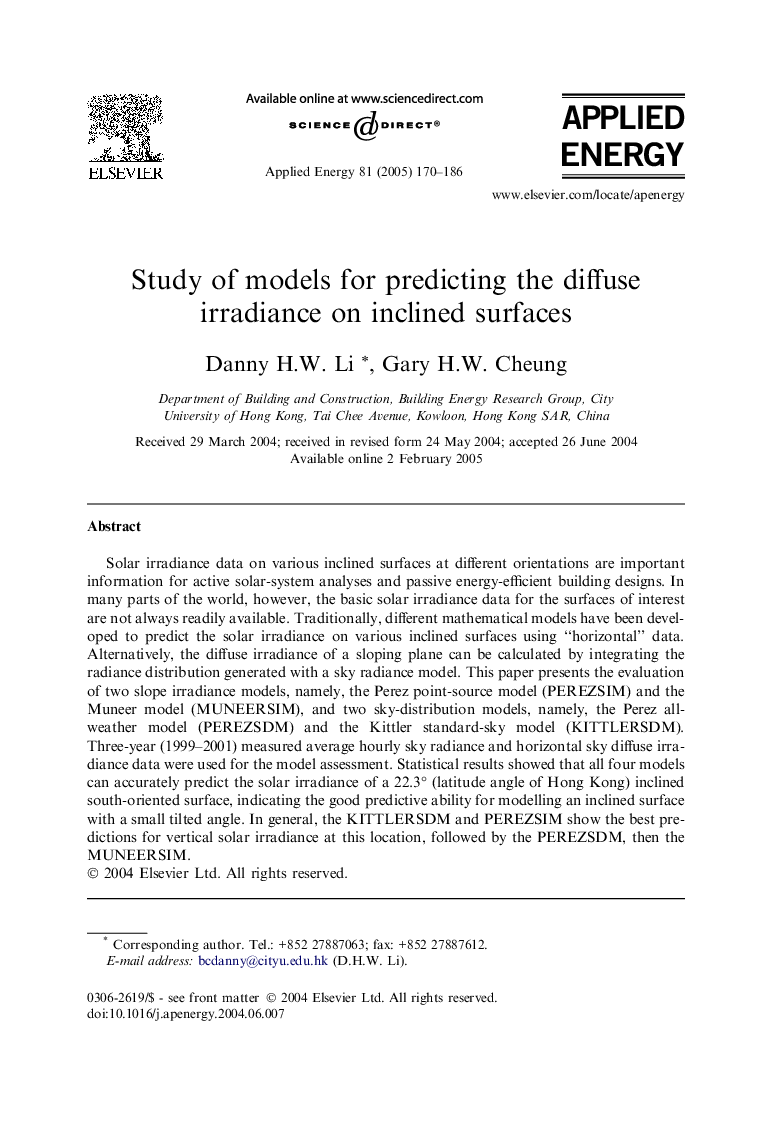| Article ID | Journal | Published Year | Pages | File Type |
|---|---|---|---|---|
| 10282060 | Applied Energy | 2005 | 17 Pages |
Abstract
Solar irradiance data on various inclined surfaces at different orientations are important information for active solar-system analyses and passive energy-efficient building designs. In many parts of the world, however, the basic solar irradiance data for the surfaces of interest are not always readily available. Traditionally, different mathematical models have been developed to predict the solar irradiance on various inclined surfaces using “horizontal” data. Alternatively, the diffuse irradiance of a sloping plane can be calculated by integrating the radiance distribution generated with a sky radiance model. This paper presents the evaluation of two slope irradiance models, namely, the Perez point-source model (PEREZSIM) and the Muneer model (MUNEERSIM), and two sky-distribution models, namely, the Perez all-weather model (PEREZSDM) and the Kittler standard-sky model (KITTLERSDM). Three-year (1999-2001) measured average hourly sky radiance and horizontal sky diffuse irradiance data were used for the model assessment. Statistical results showed that all four models can accurately predict the solar irradiance of a 22.3° (latitude angle of Hong Kong) inclined south-oriented surface, indicating the good predictive ability for modelling an inclined surface with a small tilted angle. In general, the KITTLERSDM and PEREZSIM show the best predictions for vertical solar irradiance at this location, followed by the PEREZSDM, then the MUNEERSIM.
Related Topics
Physical Sciences and Engineering
Energy
Energy Engineering and Power Technology
Authors
Danny H.W. Li, Gary H.W. Cheung,
